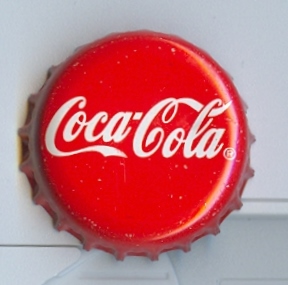Being part of the printer industry in the UK, it’s been impossible to miss the advances of 3D printing in a myriad of industries. From a design, medicinal, creative, and progressive point of view, the printers offer an incredible opportunity for major technological steps. Even NASA considers their immense potential vital for future journeys through space – in the form of 3D printed food, amongst other areas.
One of the leading companies in the field, MakerBot, have spearheaded the technology for some time now. They have offered numerous innovations, and recently opened up a digital store which is the 3D printing equivalent of iTunes. With numerous other projects from others companies, such as 3D printed food and clothes, it is apparent 2014 will develop on this growing craze. On the case in 2013 were several marketing schemes, suggesting the tangibility of such a practice could entice customers. Is 2014 the year for a 3D printing marketing explosion? Here are some of the avenues which could be exploited.
1. Big Brands
Many major brands have been taking to 3D printing in an attempt to steal a march on competitors. Coca Cola are one of many – at their Israeli base they ran a competition for customers to design a “mini-me” on their phones. They then cared for their creation (like a Tamagotchi, if you remember the toys), and selected winners then got the chance to print their mini-me off at a Coca-Cola factory. The campaign ran with a fun advertising campaign.
LEGO are considering the possibility of allowing customized 3D blocks. This would add an individualistic feel for customers keen on building unique products. As LEGO are fighting against ever popular gadgets and the video games industry, this would make for appealing marketing campaigns. Many other companies around the world (such as ASDA in the UK, and Omote 3D in Japan) have offered customers the opportunity to have 3D models of themselves printed off.
Elsewhere, Belgian Insurance company DVV have offered the option for customers to scan their keys, and have the data saved securely. If they then lose the keys, they can print the items off. This marketing campaign has been called “Key Save”. In Japan there has been a campaign titled “Muji to go”, which merged ANA Airlines and the Muji store. Shoppers were encouraged to use the stores to 3D scan themselves, and a winner was sent to an unexpected location along with their 3D model.
In another industry, Volkswagen promoted a car designing campaign which remembers of the public could enter. The eventual winner had their concept made into an actual Volkswagen Polo.
2. The Film Industry
In late 2013, as part of the marketing campaign for The Hobbit: Desolation of Smaug, film studio Warner Bros. decided to offer 3D printing blueprints. Anyone downloading the free content was allowed the chance to print off a 3D Key to Erebor. For die hard fans, it certainly offered tremendous appeal. Other films, such as Ender’s Game, offered a similar scheme. As 3D printing technology progresses and becomes affordable for the public, this is likely to become an aspect to the majority of film launches.
Danni Murray, of Warner Bros. UK, stated, “We asked Microsoft to come up with a solution that challenged the previous conventions around what was possible with its display offering and we’re confident this interactive campaign will excite and engage fans as they journey into the second film.” The possibilities for fan interaction are tremendous for canny creative minds – with so much individualistic marketing potential available, few studios are likely to skip on the option
3. The Music Industry
At the Consumer Electronics Show in January 2014, rapper Will.iam (a great supporter of progressive technology) indicated his desire to have customized 3D printing at concerts. With this option, fans could take “memorable moments” away from each show – an individualistic flair missing in much of concert merchandise. Presumably this would be a memorable moment of a musician’s performance, although there would be the potential for a stylised fan options with 3D models of concert goers at a certain invent. It’s certainly an intriguing option, and one which would work particularly well at festivals such as Coachella and Glastonbury.
4. Video Games
Joaquin Baldwin, a Walt Disney Animation Studios employee, used the technology to great effect. The Final Fantasy series is greatly revered in the gaming community, arguably no more so than the 1997 VII instalment. In 2013 he perfectly recreated the iconic cast of characters with a 3D printer – this would have been a big hit for fans, but for copyright issues taking hold. Developers Square Enix were quick to quash the move, but for any official versions they are likely to be a hit.
5. Competitions
My company ran a successful 3D printing competition during Summer 2013. Dubbed the “3D Print Cup“, students from the North West of England were encouraged to submit designs of 3D characters. The characters, one of which you can see above, were of excellent standard and prompted great interaction between the student community and our company. It was such a success we will be running the competition again from May 2014. In terms of localised marketing, it was a big success and promoted a positive, engaging image for the North West are.
6. The New iTunes
Finally, MakerBot’s Digital Store has been branded the 3D printing equivalent of iTunes. From it you can purchase “original, fun, and collectable digital content”. Currently availale are fun figurines, such as the “Space Cadets”, but it’s clearly going to be useful arena for the marketing world – to be able to custom order designs from 3D printing specialists could likely be an increasingly popular theme through 2014 and beyond. This is, of course, until we all have access to the technology and begin to master the art. Until then, it’s early days for marketing with 3D printers, but the possibilities are there for creative minds.





